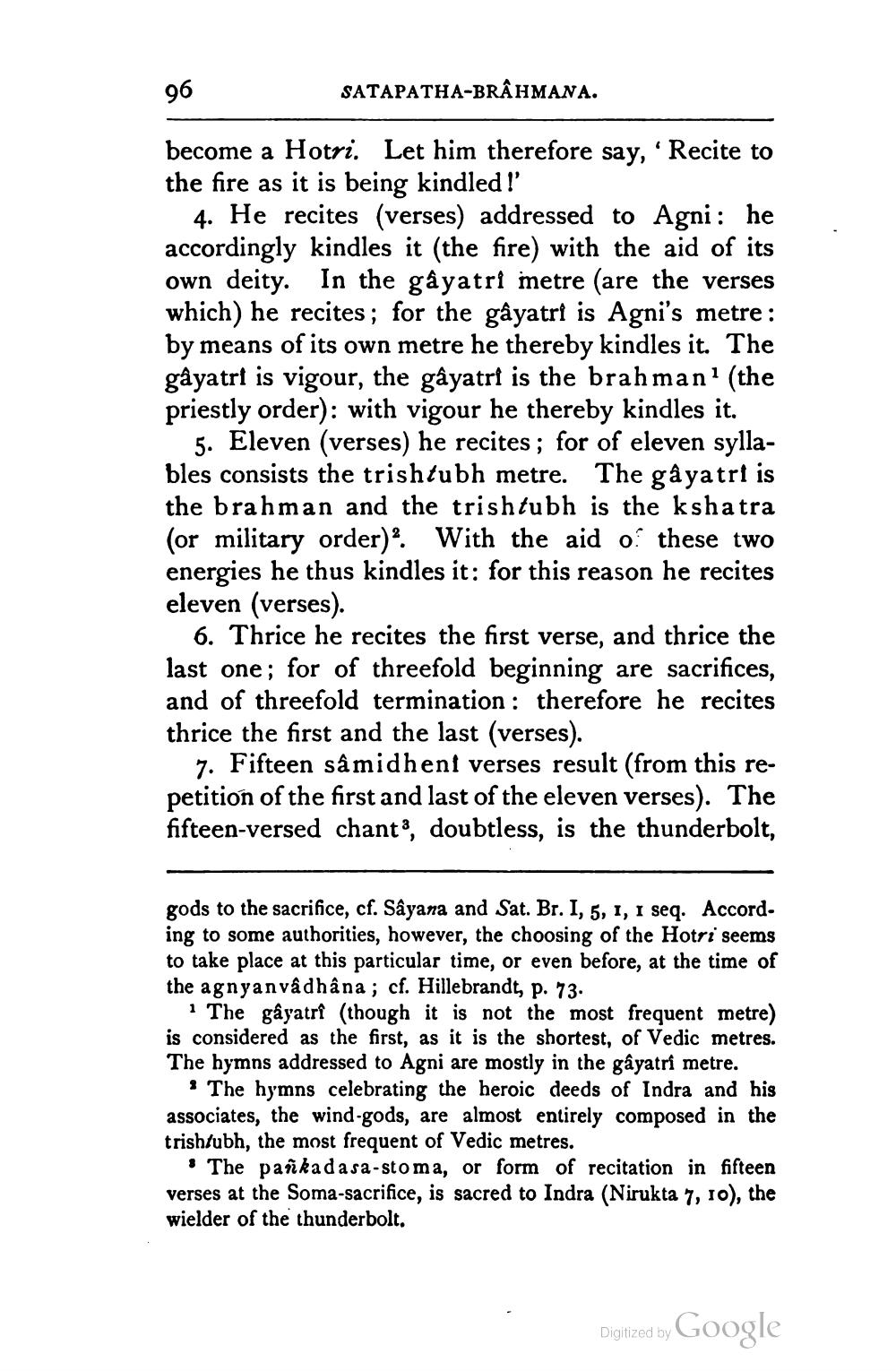________________
SATAPATHA-BRAHMANA.
become a Hotri. Let him therefore say, 'Recite to the fire as it is being kindled!'
4. He recites (verses) addressed to Agni: he accordingly kindles it (the fire) with the aid of its own deity. In the gâyatri metre (are the verses which) he recites; for the gâyatri is Agni's metre: by means of its own metre he thereby kindles it. The gâyatri is vigour, the gâyatri is the brahman' (the priestly order): with vigour he thereby kindles it.
5. Eleven (verses) he recites; for of eleven syllables consists the trishtubh metre. The gâyatri is the brahman and the trishtubh is the kshatra (or military order). With the aid of these two energies he thus kindles it: for this reason he recites eleven (verses).
6. Thrice he recites the first verse, and thrice the last one; for of threefold beginning are sacrifices, and of threefold termination: therefore he recites thrice the first and the last (verses).
7. Fifteen sâmidhent verses result (from this repetition of the first and last of the eleven verses). The fifteen-versed chant3, doubtless, is the thunderbolt,
96
gods to the sacrifice, cf. Sâyana and Sat. Br. I, 5, 1, 1 seq. According to some authorities, however, the choosing of the Hotri seems to take place at this particular time, or even before, at the time of the agnyanvâdhâna; cf. Hillebrandt, p. 73.
The gayatri (though it is not the most frequent metre) is considered as the first, as it is the shortest, of Vedic metres. The hymns addressed to Agni are mostly in the gâyatri metre.
The hymns celebrating the heroic deeds of Indra and his associates, the wind-gods, are almost entirely composed in the trish/ubh, the most frequent of Vedic metres.
The pankadasa-stoma, or form of recitation in fifteen verses at the Soma-sacrifice, is sacred to Indra (Nirukta 7, 10), the wielder of the thunderbolt.
Digitized by
Google




